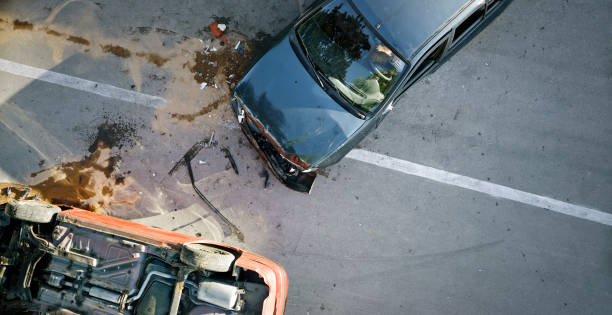How to Inspect a Second-Hand Car Like a Pro?

Second hand cars are in high demand in India. In fact, in the FY 2021-2022, approximately 4.4 million used cars found buyers in the country. If you’re reading this, you’ve narrowed down your used-car research to a final list of vehicles you’re interested in.
It’s crucial to conduct a personal inspection before making a decision. And just like a dealer, avoid relying solely on appearances. Sometimes, a car might seem appealing and worth considering, but a thorough inspection could lead you to reconsider your initial impression.
The Significance of Inspecting a Second-Hand Car
A used car inspection involves carefully examining the exterior body and all the car’s components for defects or issues to determine whether it’s a wise investment. You can perform this inspection yourself, hire a mechanic, or utilize a pre-purchase inspection service.
Undoubtedly, inspection for used cars in Gurgaon is the most crucial step, It helps you confirm whether the intended vehicle functions properly. After all, you wouldn’t want to end up shelling out a significant amount on repairs and upkeep shortly after purchasing a car.
Asking the Right Questions When Buying a Used Car
Whether you’re dealing with a private seller or a used-car dealer, asking these fundamental questions can help determine if the vehicle is worth a closer look.
How many kilometers does it have?
If the odometer reads over 32,000 kilometers or below 7,000, ask why. A car with high mileage from long highway drives might have less wear than one used primarily for short trips or stop-and-go driving. Still, take any claim of “these were all highway miles” with a pinch of skepticism. Additionally, while low kilometers can be appealing, they don’t guarantee gentle care.
What features does it have?
Regardless of whether the features are listed in the advertisement, ask about key aspects such as the type of transmission, safety equipment, audio system, cruise control, power seats, Bluetooth connectivity, rear entertainment screens, backup camera, and navigation system. Probing further could reveal some insightful comments.
What’s the overall condition of the car?
Begin with a broad question and avoid interrupting—the seller might mention something you hadn’t considered asking about.
What about the exterior and interior?
If these aspects haven’t been discussed, inquire about them specifically.
Has it ever been in an accident?
If so, ask about the extent of the damage, the cost of repairs, and who handled the work. While minor scratches may not be a concern, be cautious about a car that has been in a significant collision.
Thoroughly Inspecting a Used Car – Tips
Remember that the car-buying process is long, so you should go about it with patience. Here are some tips you should follow when buying 2nd hand cars:
-
Inspect the Car in Open View
Ensure the car is parked in a spot allowing a complete 360-degree view. This way, you can examine the vehicle from all angles and assess it thoroughly.
-
Thoroughly Check the Electronics
Begin with the simpler components, like the electrical system. Test whether all the electrical equipment responds to commands. This includes indicators, foldable external mirrors, music systems, and power windows, among others.
-
Bring a Companion Along
Having an extra set of eyes is always beneficial. Bring along a friend, relative, or a trusted mechanic or car expert who can provide additional insights or opinions about the car. Make sure to choose someone who is at least moderately interested in the task at hand. Sometimes, having an uninterested companion may hinder the process and prompt you to rush through it.
-
Listen for Unusual Noises During the Test Drive
Silence the music system and open the windows to listen for any unusual sounds, which could indicate suspension or other component issues.
-
Check the Engine for Potential Problems
Ensure the engine doesn’t produce knocking sounds or misfire. Also, be wary of any smoke emitting from the rear end, seeking a professional opinion if necessary. Use the dipstick to inspect the engine oil or for any silver elements indicating engine wear.
-
Assess the Brakes and Tire Condition
Test the brakes to ensure they respond well and aren’t difficult to press. Additionally, inspect the tires for sufficient tread depth; bargaining can be done if the rubber is significantly worn out. Scrutinize the odometer carefully for signs of tampering, such as scratches around it. Request the car’s maintenance history and service book from the owner to gain insights into its past repairs and upkeep.
-
Inspect for Leaks and Battery Issues
Examine the battery terminal for any signs of wear and tear. After conducting a comprehensive test drive, park the car and wait for up to thirty minutes to check for any leaks.
-
Look for Paint Discrepancies and Rust
Perform this check during daylight hours. Scrutinize each panel of the car closely and try to detect any variations in the paint’s texture and sheen. For instance, a repainted area might appear shinier compared to the rest of the surface, especially in older cars.
-
Check all the Documents
Ensure all necessary legal documents are transferred to your name for a complete and lawful transaction.
Conclusion
When you try to buy second hand car, before purchase, it is essential to ensure whether or not it is a smart investment, and if you make a wrong decision while buying a used car, it can be an expensive mistake. Our detailed checklist encompasses all vital aspects of the inspection, spanning from the vehicle’s exterior to its engine, as well as the critical test drive.
